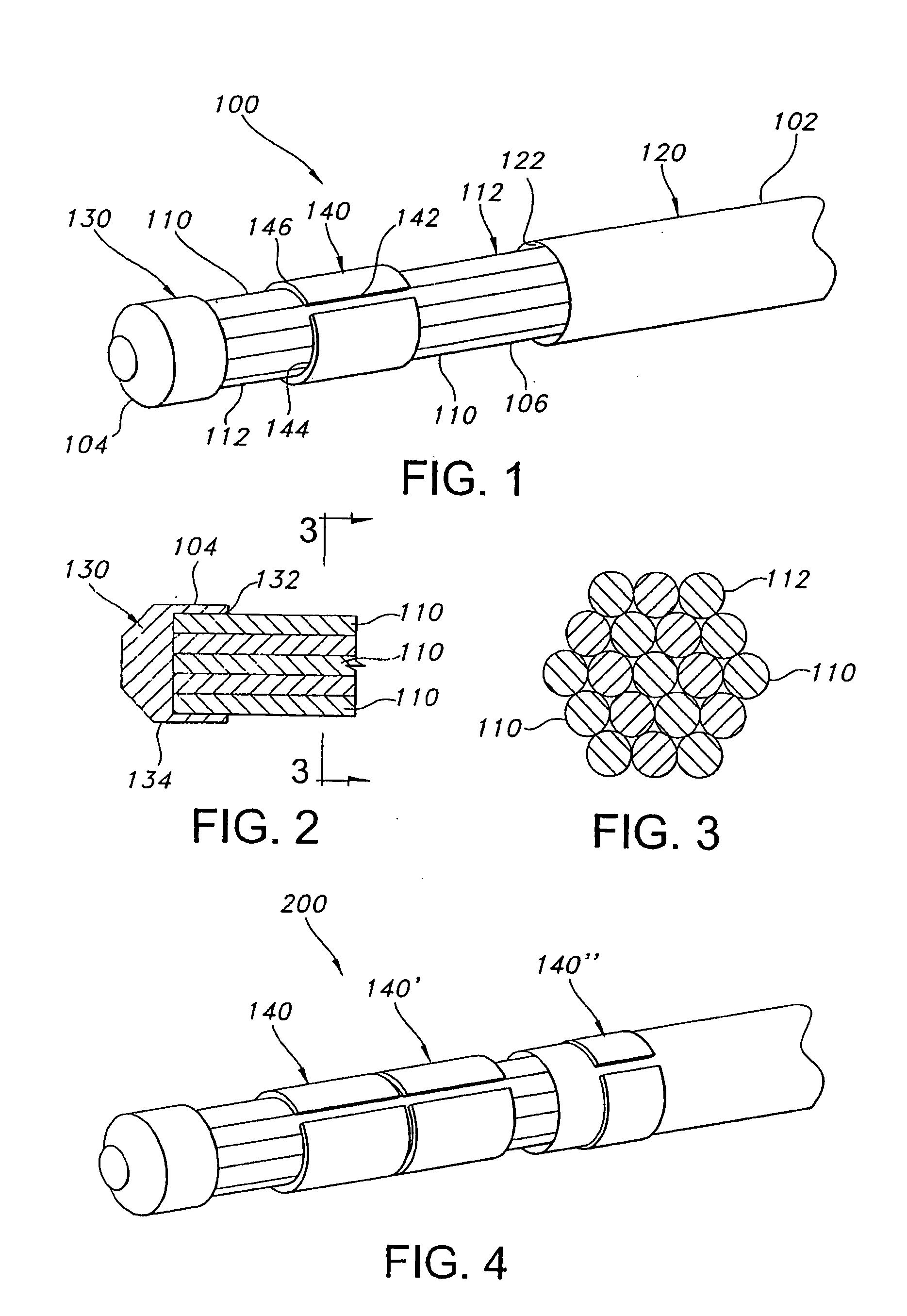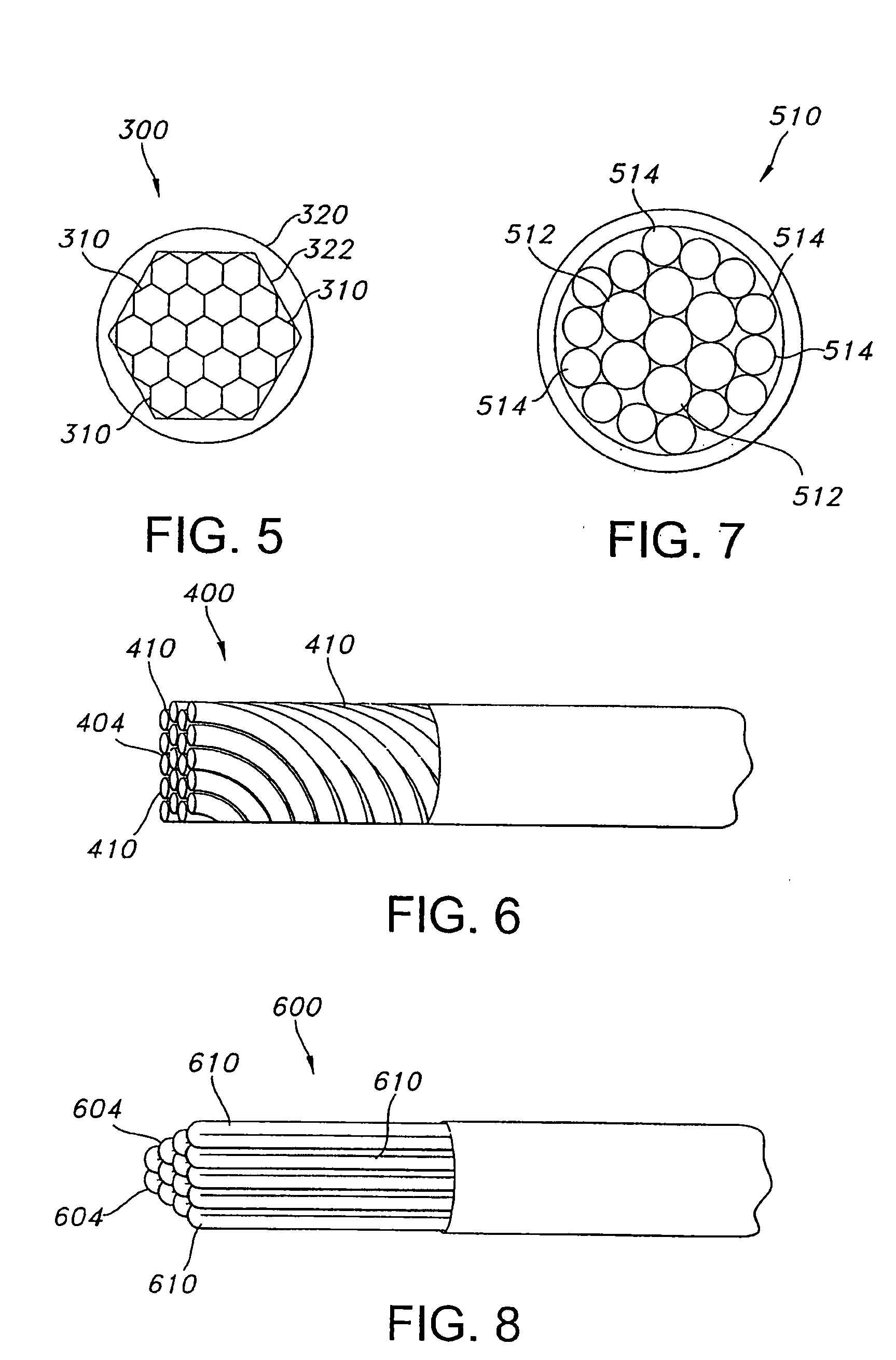Self-contouring spinal rod
- Summary
- Abstract
- Description
- Claims
- Application Information
AI Technical Summary
Problems solved by technology
Method used
Image
Examples
Embodiment Construction
[0028] Certain terminology is used herein for convenience only and is not to be taken as a limitation on the present invention. The terminology includes the words specifically mentioned, derivatives thereof and words of similar import. As used herein, the term “distal” is defined to mean a direction closer to a tip of a rod assembly as described herein and “proximal” is defined to mean a direction farther from the tip of the rod assembly as described herein. Further, the term “rod element” may mean wires, shafts, and bars, or any other elongated device, in addition to rods. The following describes preferred embodiments of the invention. However, it should be understood based on this disclosure, that the invention is not limited by the preferred embodiments of the invention.
[0029] Referring to the Figures generally, a self-contouring spinal rod assembly is shown. The rod assembly is used in a spinal implant to support the spinal implant. The rod assembly is inserted into a screw, a ...
PUM
 Login to View More
Login to View More Abstract
Description
Claims
Application Information
 Login to View More
Login to View More - R&D Engineer
- R&D Manager
- IP Professional
- Industry Leading Data Capabilities
- Powerful AI technology
- Patent DNA Extraction
Browse by: Latest US Patents, China's latest patents, Technical Efficacy Thesaurus, Application Domain, Technology Topic, Popular Technical Reports.
© 2024 PatSnap. All rights reserved.Legal|Privacy policy|Modern Slavery Act Transparency Statement|Sitemap|About US| Contact US: help@patsnap.com










